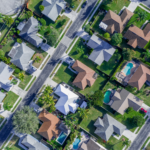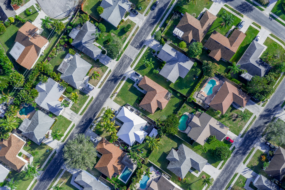
In 2022, 12% more people experienced homelessness than the year before, based on HUD’s findings that 650,000 people were in this position. Perhaps even more disheartening is that there are more first-time unhoused people than in 2022, with the number of newly homeless citizens climbing by 25%.
These numbers point to a clear influx in an already raging crisis. So, what’s leading to these outcomes, and what can we do about it?
In this post we’ll explore the socio-economic issues that industry experts say are a driving force behind the rise in homelessness and highlight potential solutions that are being discussed. Let’s start with the potential causes.
ARP Resources Have Wound Down
In 2021, at the height of the Covid-19 pandemic, President Biden launched the American Rescue Plan (ARP), which was the largest single-year investment that was attempting to reduce homelessness in U.S. History.
This helped to prevent a rise in homelessness between 2020 and 2022, despite a lot of national turbulence. As a result of this effort, the U.S. government successfully:
- Nearly cut child poverty in half to the lowest rate ever (5.2%)
- Helped over 8 million people stay in their homes
- Gave 47,500 households at risk of homeless stay in their homes thanks to the Emergency Rental Assistance Program
Despite the progress made during this time, many of these resources have now expired or are being pared down. With so many households reliant on the resources this program made available, its ending is now contributing to an increase in the homeless population.
We’re Still Feeling the Housing Shortage
The U.S. housing market isn’t able to keep up with the number of people who need housing. Currently, we’re short 6.5 million homes.
This shortage began to accelerate during the 2020 pandemic because of supply chain issues, rising material costs, and labor shortages. Now, we’re almost 4 years from the start of the pandemic and still feeling the effects.
A report from Harvard University’s Joint Center for Housing Studies found that in 2022, the supply of single-family homes, though higher than during the pandemic, was still 30% lower than at the end of 2019 (which was the previous record low). And drilling down one step further into these stats, less than a quarter of new homes built were under 1,800 square feet, compared to 37% in 1999. That means that the supply of smaller, more affordable homes is especially tight.
One factor that exacerbates the shortage is the prevalence of institutional investors, who buy up a large portion of housing inventory for profit. These investors accounted for more than 13 percent of all residential real estate purchases in 2021, according to a 2022 NAR study, removing those units from the pool of availability for individual buyers.
Zoning Laws
Another factor that sustains this housing shortage is zoning laws. 75% of land in American cities is zoned for private, single-family homes. That means that it’s illegal to build multi-family housing complexes in many residential areas.
We’ve also seen an increase in the minimum lot size requirements, so less and less space is made available for apartment complexes that can house more residents.
Adding fuel to this fire is the rise of movements like Not in My Backyard (NIMBY) where members of a neighborhood come together to prevent new affordable housing developments in their neighborhood (such as shelters, affordable housing, or group homes) from being established based on discriminatory assumptions of the population it would bring.
While these groups aren’t typically successful in preventing construction, the growth of movements like these can stand in the way of ensuring that we can overcome the housing shortage.
Income is Not Keeping Pace with Inflation and the Cost of Housing
A University of California San Francisco study found that finances are the primary reason that people become homeless. In 2023, both inflation and interest rates were on the rise, but increases in income were not tracking alongside. This left many households vulnerable to the risk of homelessness.
The same Harvard University report we mentioned before also investigated how housing costs have evolved. For homeowners, costs skyrocketed, leading to 22.7% of homeowners paying more than 30% of their total income for housing, meaning they were “cost-burdened,” and 8.7% paying more than half. These prices priced 2.4 million renters out of buying a home.
The prices were even worse for renters, though. The number of cost-burdened renters swelled to an all-time high at 49%, meaning almost half of renters were paying more than 30% of their income towards rent. And 26.4% of renters were putting more than half of their income towards housing.
These trends didn’t just appear in typical high-cost-of-living areas like Miami and San Diego, but also more medium-to-low-cost-of-living areas like New Orleans, Baton Rouge, and Memphis.
How Do We Combat Homelessness?
This swell in unhoused Americans is leading policymakers and activists alike to find solutions to make affordable housing accessible to more people. While there is no one clear answer, research and real-world examples have pointed to a few key strategies:
- Strategic public-private partnerships have been shown to be successful in addressing homelessness from all angles. Rather than relying on government intervention alone, homelessness-reduction strategies are more effective when public, private, and individuals collaborate to identify stronger solutions. Founders Together to End Homelessness is a great example of where this has worked.
- Creating more housing is critical to curbing homelessness. Strategies like limiting construction by large, for-profit developers, zoning reform, and expanding incentives for the construction of affordable housing can all contribute to increasing the supply of affordable housing.
- Addressing the impact of racial inequalities on homelessness rates is critical to creating meaningful change. Since there are proven and “staggering” inequalities between people of color and white Americans, it’s important to take an equitable approach by integrating race-informed strategies, expanding the social safety net to marginalized communities, and addressing other factors like healthcare and education, among other tactics.
- Expanding public housing programs like Housing Choice Vouchers can provide critical aid to those currently experiencing or at risk of experiencing homelessness. Expansion includes funneling more funding to these initiatives, building awareness in more communities, and providing support for those navigating this system for the first time.
Clearly, the alarming rise in homelessness in 2023 is a multifaceted issue that demands immediate and diverse strategies. A holistic approach is vital to getting in front of the issue and preventing further expansion of housing issues throughout these next few years.









